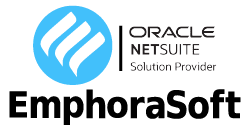
NetSuite Workflows: Automating Repetitive Tasks for Enhanced Efficiency
Introduction
In today’s fast-paced and ever-evolving business landscape, organizations are constantly seeking ways to optimize their processes, increase efficiency, and drive productivity. One of the most effective strategies for achieving these goals is through the implementation of workflow automation. NetSuite, a leading cloud-based enterprise resource planning (ERP) solution, offers robust workflow automation capabilities that empower businesses to streamline their operations, eliminate manual tasks, and unlock new levels of efficiency.
NetSuite workflows are designed to automate repetitive and time-consuming tasks, freeing up valuable resources and allowing employees to focus on more strategic and value-added activities. By leveraging the power of NetSuite’s workflow automation tools, organizations can reduce errors, improve data accuracy, enhance communication and collaboration, and gain greater visibility and control over their processes.
In this comprehensive blog post, we will dive deep into the world of NetSuite workflows, exploring their benefits, common use cases across various business functions, and best practices for implementing and optimizing workflow automation. Whether you are a NetSuite administrator, a business process owner, or a decision-maker looking to drive efficiency in your organization, this post will provide you with the knowledge and insights needed to harness the full potential of NetSuite workflows.
The Business Case for NetSuite Workflow Automation
Before delving into the specifics of NetSuite workflows, it is essential to understand the compelling business case for workflow automation. In today’s competitive business environment, organizations are under constant pressure to improve efficiency, reduce costs, and enhance customer satisfaction. Workflow automation addresses these challenges head-on by:
1. Streamlining Processes: Workflow automation eliminates manual and repetitive tasks, streamlining processes and reducing the time and effort required to complete them. By automating key business processes, organizations can achieve significant efficiency gains, enabling them to do more with less.
2. Improving Accuracy and Consistency: Manual processes are inherently prone to human error, which can lead to costly mistakes, data inconsistencies, and compliance issues. Workflow automation ensures that tasks are executed consistently and accurately every time, based on predefined rules and criteria. This reduces the risk of errors and enhances the overall quality and reliability of data.
3. Enhancing Communication and Collaboration: Workflow automation facilitates seamless communication and collaboration among team members, departments, and external stakeholders. Automated notifications, alerts, and approvals keep everyone informed and aligned, reducing communication gaps and ensuring that tasks and processes move forward smoothly.
4. Increasing Visibility and Control: NetSuite workflows provide real-time visibility into the status of tasks and processes, enabling managers and decision-makers to track progress, identify bottlenecks, and make data-driven decisions. With customizable dashboards and reports, organizations can gain valuable insights into their operations and continuously monitor and optimize their workflows.
5. Enabling Scalability and Growth: As businesses grow and evolve, their processes and requirements become more complex. NetSuite workflows are highly scalable and adaptable, allowing organizations to easily modify and expand their automation capabilities to meet changing needs. This flexibility enables businesses to scale their operations efficiently and effectively, without being constrained by manual processes.
By embracing workflow automation, organizations can unlock significant benefits, including increased productivity, improved accuracy, enhanced collaboration, greater visibility, and the ability to scale and adapt to changing business requirements. These benefits translate into tangible business outcomes, such as reduced costs, faster time-to-market, improved customer satisfaction, and increased competitiveness.
Common Use Cases for NetSuite Workflows
NetSuite workflows can be applied to a wide range of business processes across various departments and functions. Let’s explore some common use cases where workflow automation can deliver significant value:
1. Order-to-Cash Process Automation
The order-to-cash process is a critical component of any business, encompassing the entire lifecycle from sales order creation to invoicing and payment collection. NetSuite workflows can automate various stages of this process, including:
– Automatically creating sales orders based on customer quotes or purchase orders
– Routing sales orders for approval based on predefined criteria, such as order value or customer type
– Generating invoices upon order fulfillment and triggering automated payment reminders
– Updating inventory levels and generating reorder alerts when stock falls below a certain threshold
By automating the order-to-cash process, businesses can streamline their operations, reduce manual intervention, and improve customer satisfaction through faster order processing and accurate invoicing.
2. Procurement and Vendor Management
Effective procurement and vendor management are essential for controlling costs, ensuring compliance, and maintaining strong supplier relationships. NetSuite workflows can automate various aspects of procurement and vendor management, such as:
– Automatically generating purchase orders based on approved requisitions
– Routing purchase orders for approval based on predefined criteria, such as purchase amount or department
– Sending automated notifications to vendors upon purchase order creation and updates
– Triggering payment approvals and processing based on vendor invoices and payment terms
By automating procurement workflows, organizations can ensure that purchases are made in compliance with company policies, reduce the risk of unauthorized spending, and streamline vendor communication and payment processing.
3. Employee Onboarding and Offboarding
Employee onboarding and offboarding involve numerous tasks and processes that span multiple departments, including HR, IT, and finance. NetSuite workflows can automate these processes, ensuring a smooth and efficient transition for new hires and departing employees. Examples include:
– Triggering new hire checklists and tasks upon employee record creation
– Automatically assigning user roles and permissions based on job function
– Generating IT requests for equipment and system access
– Initiating offboarding tasks, such as revoking system access and processing final payments, upon employee termination
By automating employee onboarding and offboarding workflows, businesses can reduce manual effort, minimize the risk of overlooked tasks, and provide a seamless experience for employees throughout their employment lifecycle.
4. Expense Report Approval and Reimbursement
Expense report processing is a common pain point for many organizations, often involving manual data entry, complex approval hierarchies, and delays in employee reimbursement. NetSuite workflows can automate the expense approval and reimbursement process, including:
– Routing expense reports for approval based on predefined criteria, such as expense amount or department
– Automatically generating GL entries upon expense report approval
– Triggering reimbursement payments to employees based on approved expenses
– Sending automated notifications to employees about the status of their expense reports
By automating expense report workflows, organizations can streamline the approval process, ensure compliance with company policies, and accelerate reimbursement to employees, ultimately improving employee satisfaction and financial accuracy.
5. Customer Support and Case Management
Providing exceptional customer support is crucial for building strong customer relationships and driving business growth. NetSuite workflows can automate various aspects of customer support and case management, such as:
– Automatically assigning cases to support agents based on predefined criteria, such as case type or customer segment
– Escalating cases based on severity and response time thresholds
– Triggering automated email notifications to customers upon case creation, updates, and resolution
– Generating reports and analytics on case resolution metrics and customer satisfaction
By automating customer support workflows, businesses can ensure prompt and efficient case resolution, improve customer communication, and gain valuable insights into support performance and customer satisfaction levels.
These are just a few examples of the many use cases where NetSuite workflows can be applied to drive efficiency and streamline operations. The flexibility and adaptability of NetSuite workflows enable organizations to automate processes across various departments, including finance, sales, marketing, human resources, and more.
Implementing NetSuite Workflows: A Step-by-Step Guide
Now that we have explored the benefits and common use cases of NetSuite workflows, let’s dive into the process of implementing workflow automation in your organization. Here is a step-by-step guide to help you get started:
Step 1: Identify Automation Opportunities
The first step in implementing NetSuite workflows is to identify processes that are suitable for automation. Start by assessing your current business processes and looking for areas where manual tasks, repetitive work, and potential for errors or delays exist. Engage with stakeholders from different departments to gather their input and understand their pain points and requirements.
Consider the following factors when identifying automation opportunities:
– Repetitive tasks that consume significant time and resources
– Processes that involve multiple steps, approvals, or handoffs between departments
– Areas where data accuracy and consistency are critical
– Processes that are prone to human error or have a history of issues
– Tasks that require timely notifications, alerts, or escalations
By thoroughly assessing your processes and involving key stakeholders, you can prioritize the most impactful automation opportunities and develop a roadmap for implementation.
Step 2: Map Out the Workflow
Once you have identified the processes to automate, the next step is to map out the workflow in detail. This involves breaking down the process into its constituent steps, defining the triggers that initiate the workflow, determining the actions and decisions that need to be made at each stage, and specifying the desired outcomes.
When mapping out the workflow, consider the following elements:
– Triggering events: What event or condition will initiate the workflow? This could be the creation of a new record, the update of a field, or a scheduled time.
– Actions and decisions: What actions need to be performed at each step of the workflow? This may include updating fields, sending notifications, creating tasks, or routing items for approval.
– Branching and conditions: Are there any decision points or conditions that determine the flow of the workflow? For example, if an order value exceeds a certain threshold, it may require additional approvals.
– Exceptions and error handling: What should happen if an exception or error occurs during the workflow execution? Define how to handle such scenarios gracefully.
By thoroughly mapping out the workflow, you can ensure that all necessary steps and considerations are accounted for, providing a clear blueprint for the subsequent implementation.
Step 3: Configure the Workflow in NetSuite
With the workflow mapped out, it’s time to translate it into NetSuite’s workflow engine. NetSuite provides a user-friendly interface for configuring workflows, allowing you to define states, transitions, and actions using a drag-and-drop canvas.
Here are the key steps involved in configuring a workflow in NetSuite:
- Navigate to the Workflow Manager and create a new workflow.
- Define the workflow name, description, and any necessary parameters.
- Add states to represent the different stages of the workflow.
- Configure transitions between states based on the defined triggering events and conditions.
- Specify actions to be performed at each state, such as updating fields, sending notifications, or creating tasks.
- Set up any necessary approvals, escalations, or error handling mechanisms.
- Test the workflow thoroughly to ensure it functions as intended.
NetSuite provides a wide range of built-in actions and integrations that can be leveraged in workflows, such as sending emails, creating records, updating fields, and integrating with external systems. Take advantage of these capabilities to automate tasks and streamline your processes effectively.
Step 4: Test and Refine
Before deploying the workflow to a live environment, it is crucial to thoroughly test it to ensure it functions as expected. Create test scenarios that cover various permutations and edge cases to validate the workflow’s behavior under different conditions.
During the testing phase, consider the following:
– Test with real-world data: Use realistic test data that closely resembles your actual business scenarios to ensure the workflow can handle real-world situations.
– Validate data accuracy: Verify that the workflow updates fields, creates records, and performs calculations accurately based on the defined rules and logic.
– Check notifications and alerts: Ensure that notifications, alerts, and escalations are triggered correctly and sent to the appropriate recipients.
– Monitor performance: Assess the workflow’s performance and identify any potential bottlenecks or performance issues that may need optimization.
Based on the testing results, make necessary refinements and adjustments to the workflow configuration. Iterate on the testing and refinement process until you are confident that the workflow meets your requirements and performs optimally.
Step 5: Train and Deploy
Once the workflow has been thoroughly tested and refined, it’s time to deploy it to your production environment. However, before going live, it is essential to provide training and communication to the users who will be interacting with the automated process.
Conduct training sessions to familiarize users with the new workflow, explaining its purpose, benefits, and any changes to their roles and responsibilities. Provide clear instructions and documentation on how to navigate the workflow, handle exceptions, and access relevant information.
Ensure that all stakeholders, including managers, process owners, and end-users, are aligned and prepared for the workflow deployment. Communicate the go-live date, any potential impact on their day-to-day activities, and the support channels available for assistance.
Step 6: Monitor and Continuously Improve
Deploying the workflow is not the end of the journey; it’s just the beginning. Continuously monitor the performance and effectiveness of the automated process to ensure it delivers the desired results and identifies areas for improvement.
Establish key performance indicators (KPIs) relevant to the workflow, such as processing time, error rates, and user satisfaction, and track them regularly. Use NetSuite’s built-in reporting and analytics capabilities to gain insights into workflow execution and identify trends, bottlenecks, or anomalies.
Gather feedback from users and stakeholders to understand their experience with the automated process and collect suggestions for enhancements. Regularly review the workflow configuration and make necessary updates to adapt to changing business requirements, optimize performance, and address any issues that arise.
By adopting a continuous improvement mindset and actively monitoring and refining your workflows, you can ensure that your automated processes remain effective, efficient, and aligned with your business goals over time.
Best Practices for NetSuite Workflow Automation
To maximize the benefits of NetSuite workflows and ensure successful implementation and maintenance, consider the following best practices:
1. Keep it Simple and Focused: Strive for simplicity and focus when designing workflows. Avoid overcomplicating the process with unnecessary steps or conditions. Aim to automate the core tasks that deliver the most value and efficiency gains, breaking down complex processes into smaller, manageable workflows.
2. Leverage NetSuite’s Native Functionality: Utilize NetSuite’s built-in fields, forms, and actions wherever possible to minimize customization and ensure compatibility with future updates. Take advantage of NetSuite’s pre-built templates and best practices to accelerate workflow development and ensure adherence to industry standards.
3. Use Clear and Descriptive Naming Conventions: Adopt clear and descriptive naming conventions for your workflows, states, and actions. Use names that accurately reflect the purpose and function of each element, making it easier for administrators and users to understand and maintain the workflows over time.
4. Implement Proper Access Controls and Permissions: Ensure that workflows are set up with appropriate access controls and permissions. Restrict access to sensitive workflows and data based on user roles and responsibilities. Implement approval steps and checks to maintain the integrity and security of automated processes.
5. Document and Maintain Workflows: Create detailed documentation that outlines the purpose, triggers, actions, and exceptions for each workflow. Include screenshots, flowcharts, and step-by-step instructions to facilitate understanding and troubleshooting. Regularly update the documentation as workflows are modified or enhanced.
6. Monitor and Audit Workflow Performance: Continuously monitor the performance and effectiveness of your workflows. Set up alerts and notifications to proactively identify any issues or bottlenecks. Regularly audit workflow execution logs to ensure that processes are running smoothly and accurately.
7. Collaborate and Gather Feedback: Engage with stakeholders and end-users throughout the workflow development and optimization process. Seek feedback and input from those who are directly impacted by the automated processes. Encourage open communication and collaboration to identify areas for improvement and ensure alignment with business requirements.
8. Plan for Scalability and Future Growth: Design workflows with scalability and future growth in mind. Consider how workflows may need to adapt and expand as the business evolves and new requirements emerge. Build flexibility into your workflows to accommodate changes in processes, data structures, and integrations.
By following these best practices, you can ensure that your NetSuite workflows are robust, maintainable, and deliver maximum value to your organization.
Conclusion
NetSuite workflows offer a powerful solution for automating repetitive tasks, streamlining processes, and driving efficiency across various business functions. By leveraging the capabilities of NetSuite’s workflow engine, organizations can eliminate manual interventions, reduce errors, improve communication and collaboration, and gain real-time visibility into their operations.
Implementing NetSuite workflows involves a structured approach, including identifying automation opportunities, mapping out workflows, configuring them in NetSuite, testing and refining, training users, and continuously monitoring and improving the automated processes. By following best practices and adopting a continuous improvement mindset, businesses can maximize the benefits of workflow automation and ensure long-term success.
As the business landscape continues to evolve and the demand for efficiency and agility grows, embracing tools like NetSuite workflows becomes increasingly critical. By automating repetitive tasks and freeing up valuable resources, organizations can focus on strategic initiatives, innovation, and growth, ultimately gaining a competitive edge in their respective markets.
If you are ready to embark on the journey of workflow automation and unlock the full potential of your NetSuite investment, start by assessing your current processes, engaging with stakeholders, and developing a clear roadmap for implementation. With the right approach and the power of NetSuite workflows at your disposal, you can transform your organization into a more efficient, agile, and future-ready entity.
Get in Touch
We know what NetSuite can do and how it can help you. Schedule your free NetSuite assessment today
FAQs:
NetSuite workflows are a feature within the NetSuite ERP platform that allows businesses to automate repetitive, manual processes. They enable users to define rules, conditions, and actions to streamline operations, reduce errors, and enhance productivity.
Workflow automation eliminates manual tasks, reduces errors, and ensures consistency. It improves efficiency, enhances collaboration, provides real-time visibility, and supports scalability, enabling businesses to focus on strategic activities rather than routine operations.
NetSuite workflows are widely used across various departments for tasks like:
- Automating the order-to-cash process
- Streamlining procurement and vendor management
- Managing employee onboarding and offboarding
- Simplifying expense report approvals and reimbursements
- Enhancing customer support and case management
NetSuite workflows automate key steps in the order-to-cash process, such as generating sales orders from quotes, routing approvals, automating invoicing, sending payment reminders, and updating inventory levels. This ensures faster order processing and accurate record-keeping.
Automating onboarding ensures a smooth process by:
- Triggering task checklists
- Assigning system roles and permissions
- Generating IT equipment requests
- Streamlining communication across HR, IT, and finance
This reduces errors and provides new hires with a positive experience.
To implement a workflow:
- Identify processes suitable for automation.
- Map out the workflow steps, triggers, and decisions.
- Configure the workflow using NetSuite’s Workflow Manager.
- Test and refine the workflow.
- Train users and deploy the workflow.
- Monitor performance and continuously improve the workflow.
The main components include:
- Triggers: Conditions that initiate the workflow.
- States: Different stages within the workflow.
- Transitions: Rules for moving between states.
- Actions: Tasks performed, such as sending notifications or updating records.
- Conditions: Criteria that influence workflow decisions.
NetSuite workflows automate purchase order creation, approval routing, vendor communication, and payment processing. This ensures compliance with procurement policies, reduces manual intervention, and fosters strong vendor relationships.
Yes, NetSuite workflows are highly customizable. Users can define custom triggers, conditions, actions, and approval hierarchies to align workflows with unique business needs, ensuring flexibility and scalability.
To maximize the benefits of NetSuite workflows:
- Keep workflows simple and focused on key tasks.
- Involve stakeholders in the design process.
- Regularly test and refine workflows.
- Monitor KPIs and gather user feedback.
- Continuously adapt workflows to evolving business needs.








